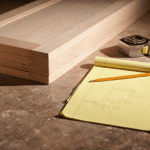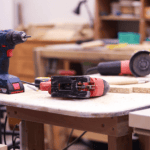
Crafting with wood is not only a skill but also an art form that has been cherished and developed over countless generations. Whether you dream of creating beautiful furniture, intricate carvings, or simple DIY projects, having a dedicated space can make all the difference. But where do you start? Setting up your first home woodworking workshop may seem daunting, but with a little planning and know-how, you can create a space that’s both functional and inspiring. This guide will walk you through the essentials to set the foundation for your woodworking journey.
Determine Your Space
The first step in establishing your workshop is to decide where it will be located. This could be a dedicated shed, a corner of your garage, or even a spare room. Consider the following:
- Size: Ensure it’s big enough to house your tools and have space for your projects. Remember, you can always start small and expand later.
- Lighting: Natural light is ideal, but make sure to have sufficient artificial lighting for when the sun goes down.
- Ventilation: Woodworking can produce dust and fumes, so good ventilation is crucial.
The Essential Tools
Start with the basics. As you grow in skills and experience, you can add more tools. Here’s a list to get you started:
- Hand Tools: Measuring tape, squares, chisels, mallets, and screwdrivers.
- Power Tools: A circular saw, drill, and jigsaw are good starting points.
- Safety Gear: Safety goggles, hearing protection, and a dust mask are non-negotiables.
Workbench – The Heart of Your Workshop
Your workbench is where the magic happens. It’s your main workspace and should be sturdy and of the right height for you. You can buy a pre-made bench, or, for a personal touch, create one tailored to your needs.
Storage Solutions
Organization is key. Proper storage ensures your tools are always within reach and helps maintain a safe workspace. Consider:
- Shelving: For your wood supplies and larger equipment.
- Drawers: For hand tools and smaller items.
- Pegboards: A wall-mounted pegboard can display tools at arm’s reach.

Safety First
Safety should never be an afterthought.
- First-Aid Kit: Keep it stocked and easily accessible.
- Fire Extinguisher: Especially important if you’ll be working with flammable materials or tools that produce sparks.
- Ground Fault Circuit Interrupter (GFCI) Outlets: These help protect against electrical shock.
Crafting Your First Projects
Embarking on your first woodworking project can be both exciting and a bit daunting. Start simple to build confidence and foundational skills. Opt for straightforward projects like a basic shelf, a birdhouse, or a picture frame. These beginner-friendly tasks offer a practical introduction to woodworking techniques and tools. As your skill set grows, you can venture into more intricate designs, steadily transforming your visions into wooden realities.
Join a Community
Woodworking is a craft that thrives on shared knowledge and camaraderie. Being part of a community can offer invaluable insights, mentorship, and motivation. Whether it’s an online forum where you can exchange tips and showcase projects or a local woodworking club offering workshops, connecting with fellow enthusiasts can enrich your woodworking journey. Together, you can celebrate achievements, troubleshoot challenges, and evolve as craftsmen.
Invest in Quality, Not Quantity
As you build your collection of tools and materials, it’s tempting to buy a lot quickly. However, it’s more beneficial to prioritize quality over quantity. A high-quality tool can last a lifetime and provide better results than a cheaper alternative. As you progress in your woodworking journey, you’ll appreciate the difference that quality makes.

Consider Dust Management
Woodworking can generate a significant amount of sawdust and debris. Not only is this a potential health hazard, but it can also make your workspace messy and less efficient. Invest in a good dust collection system or even a shop vacuum to manage and minimize dust. Furthermore, using dust masks or respirators is a good practice, especially when working with specific woods that might produce allergens.
Conclusion
Setting up your first home woodworking workshop is the beginning of a journey filled with creativity, craftsmanship, and personal satisfaction. It’s a world where a simple piece of timber can be transformed into something beautiful and functional. Remember, the key is to start small, prioritize safety, and enjoy the process. With the right preparation and passion, your workshop will not just be a space of creation but also a sanctuary of inspiration. Now, as you take these first steps, envision the masterpieces you will craft and the memories you’ll forge in your very own woodworking haven.






